Company foundation
April 12, 1883
The origins of ELECTRIC date back to 1883. It was at this time that Mr. Béringer organized the distribution of devices for converting gas lighting installations into electrical installations.
Company development
14 Mai 1898
His successor, Césaire De Vos, developed the company. His strategy was simple: visit foreign companies to find products that could be marketed in Belgium. Philips importer at the beginning of the 20th century, the company gradually reduced the import of electrical equipment to focus on the distribution of Belgian products which were beginning to emerge, catalog in support.
OPENING OF NEW SALES POINTS
1929
In 1929, Electric Inc. opened new sales points in Arlon and Roeselare, marking a significant expansion of its presence in Belgium.
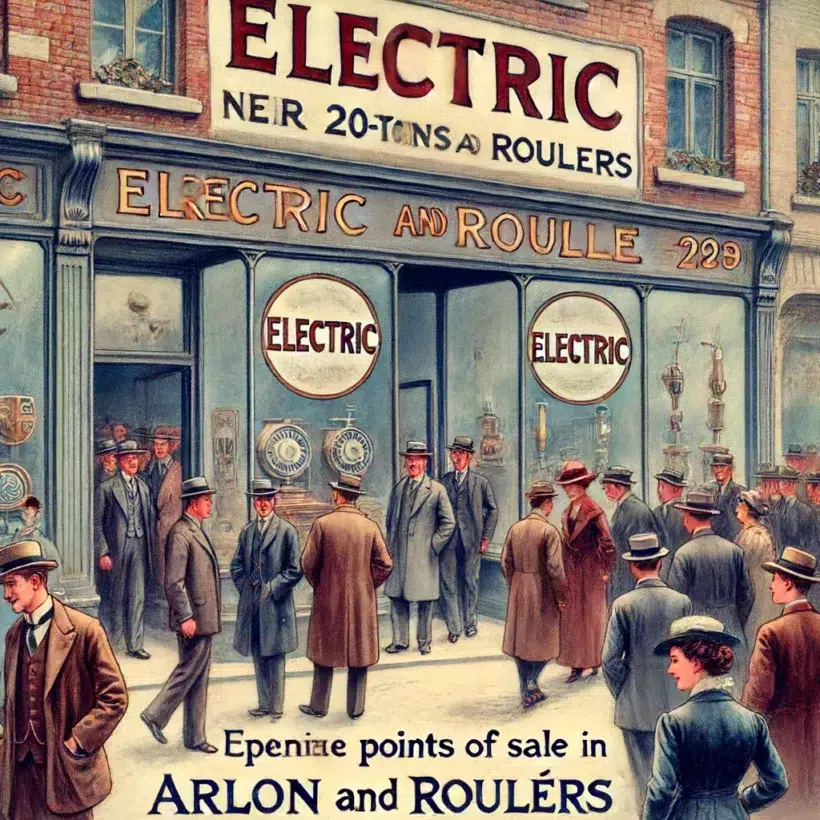
THE DIVERSIFICATION OF ELECTRIC
1928
In 1928, to cope with the ongoing expansion of its business, the Cooperative Society "Electric" became a joint-stock company (Electric Inc.) and diversified. A factory for the manufacture of gears and mechanical parts for the automotive industry was inaugurated.
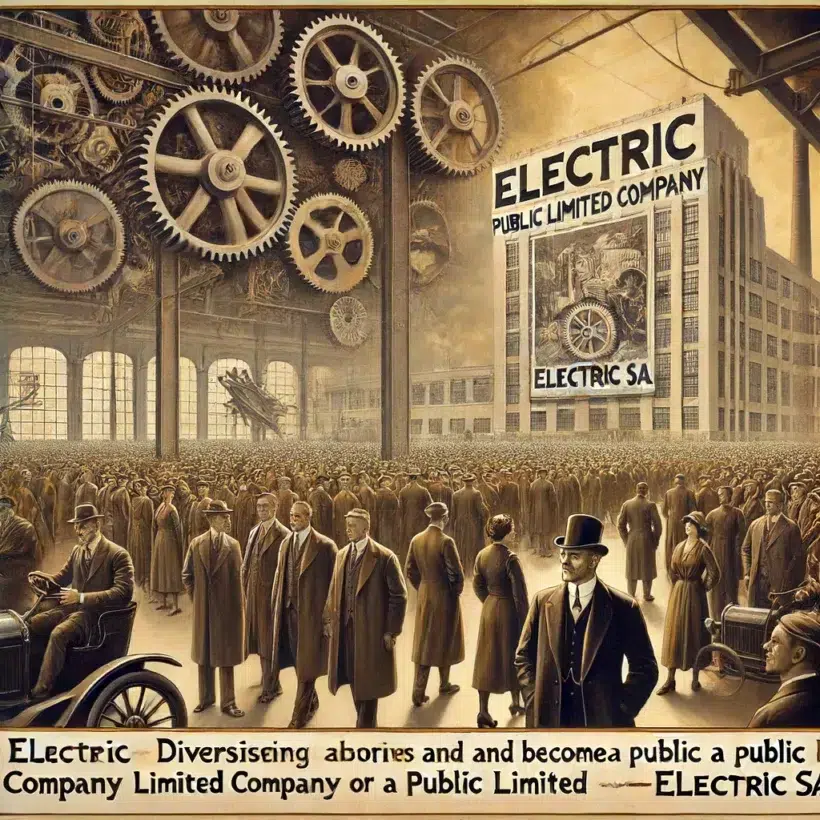
THE BILUX LAMP FOR CAR HEADLIGHTS
1925
In 1925, the collaboration between OSRAM and BOSCH resulted in the commercialization of the first BILUX lamp with two filaments for car headlights. This innovation significantly improved drivers' visibility and road safety.
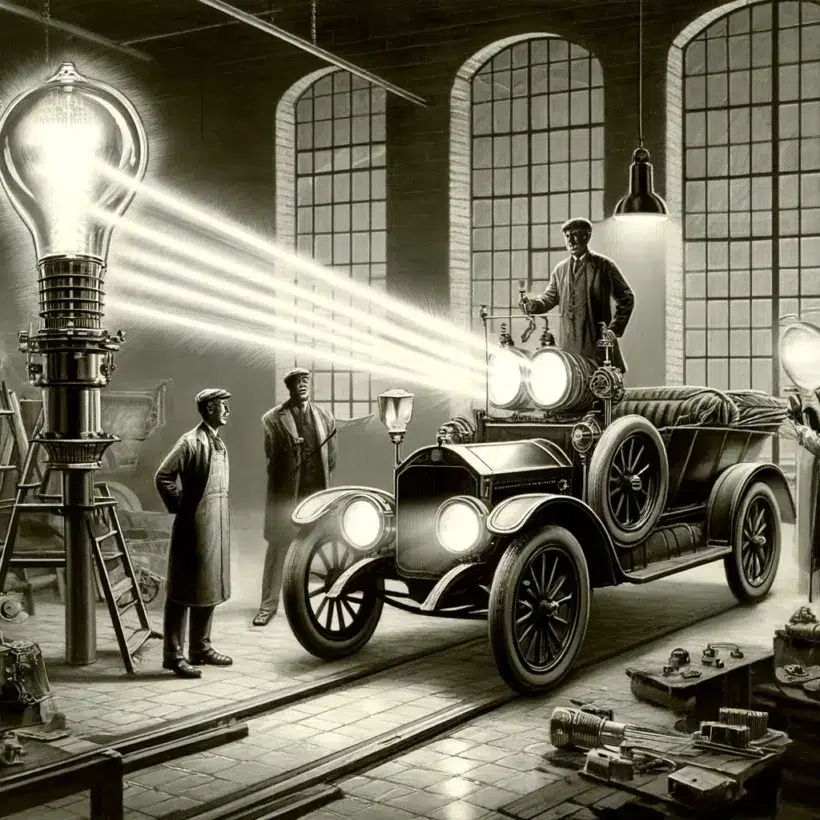
ELECTRIC BECOMES A COOPERATIVE COMPANY
1923
In 1923, Electric transformed into a cooperative company by merging with five other firms to become "Electric" cooperative company. The company settled at 61 Poincaré Boulevard in Brussels.

THE BEGINNING OF TELEVISION
1923
In 1923, Vladimir Zworykin, a Russian engineer who emigrated to the United States, developed the first cathode ray tube for television, marking the beginning of this new medium.
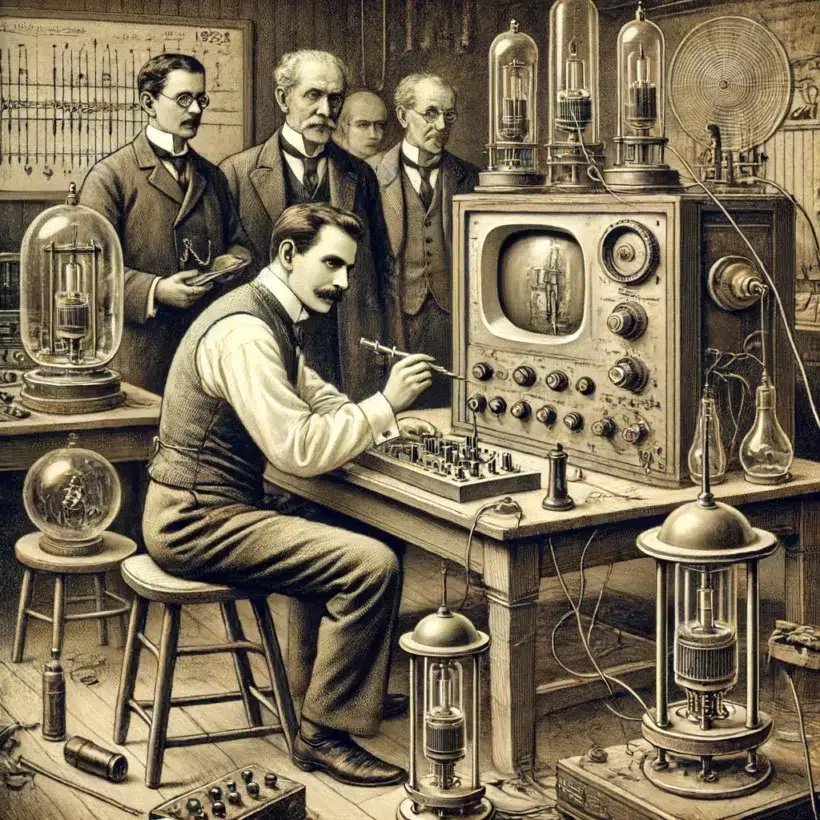
THE FIRST FAX
1922
In 1922, the first fax was sent by telephone line to Washington. This innovation enabled the rapid transmission of documents and heralded the era of modern communications.
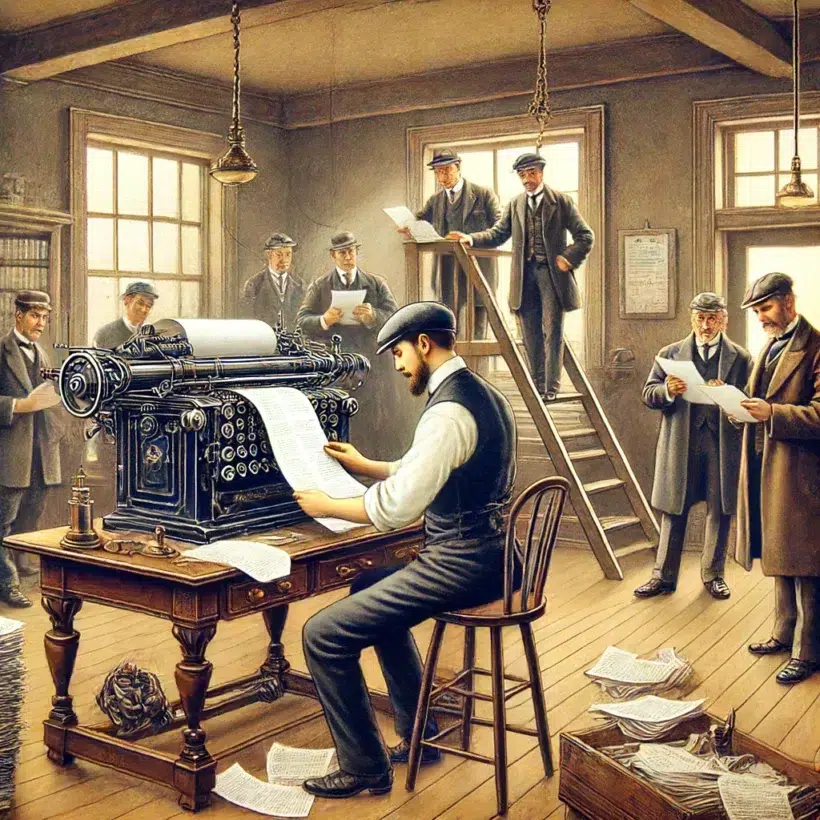
THE FOUNDATION OF THE NIKO COMPANY
1919
In 1919, brothers Alphonse and Werner De Backer founded the company Niko. This Belgian company would become a major player in the field of lighting and electrical solutions.
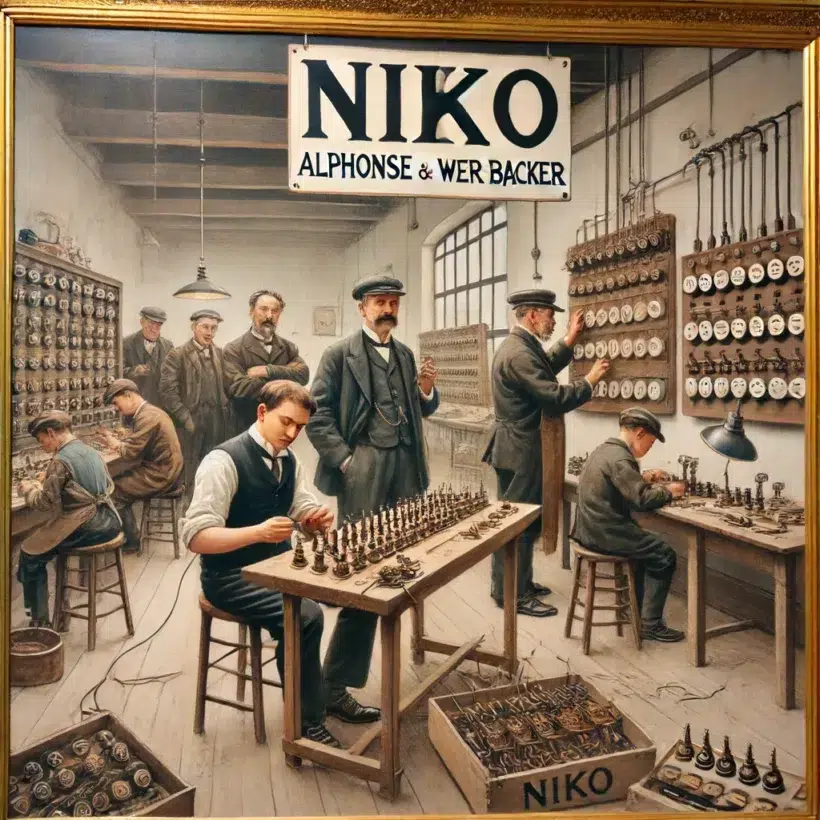
THE END OF THE FIRST WORLD WAR
1918
In 1918, the First World War ended, having claimed 10 million victims. This period of reconstruction was marked by an acceleration of technological innovations.
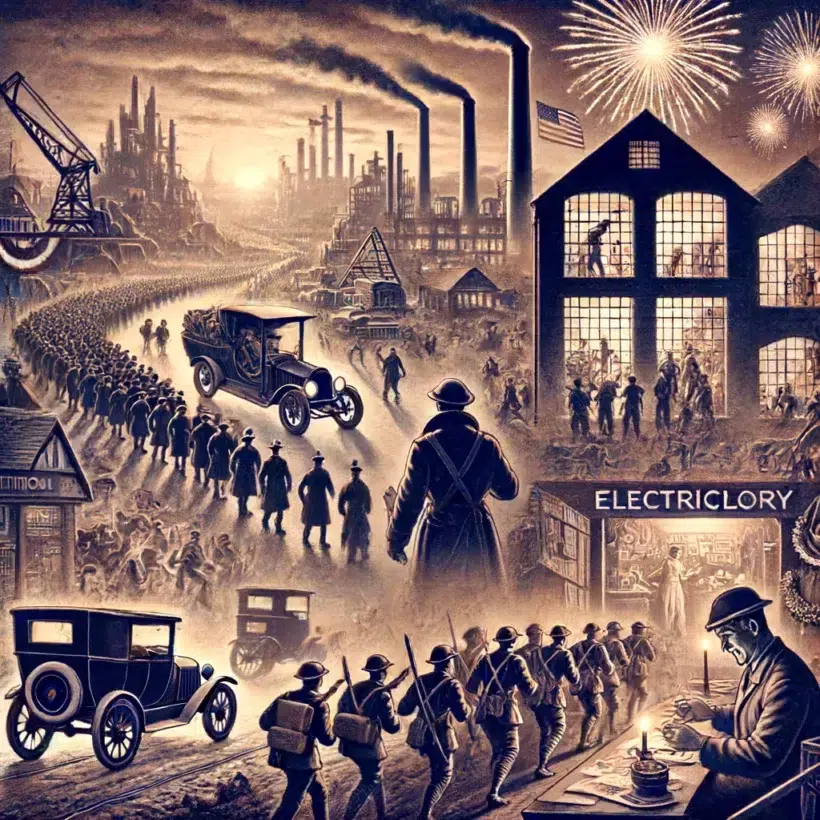
THE INVENTION OF THE FLUORESCENT LAMP
1915
In 1915, Thomas Edison created the first fluorescent lamp. This innovation allowed for better energy efficiency and paved the way for new lighting applications.

THE RECOGNITION OF ELECTRICAL MEASUREMENT UNITS
1914
In 1914, at the congress of electricians in Chicago, the measurement units approved at previous congresses (1881 and 1889) were confirmed and clarified. This year also marked the appearance of the first single-rate electric meters.
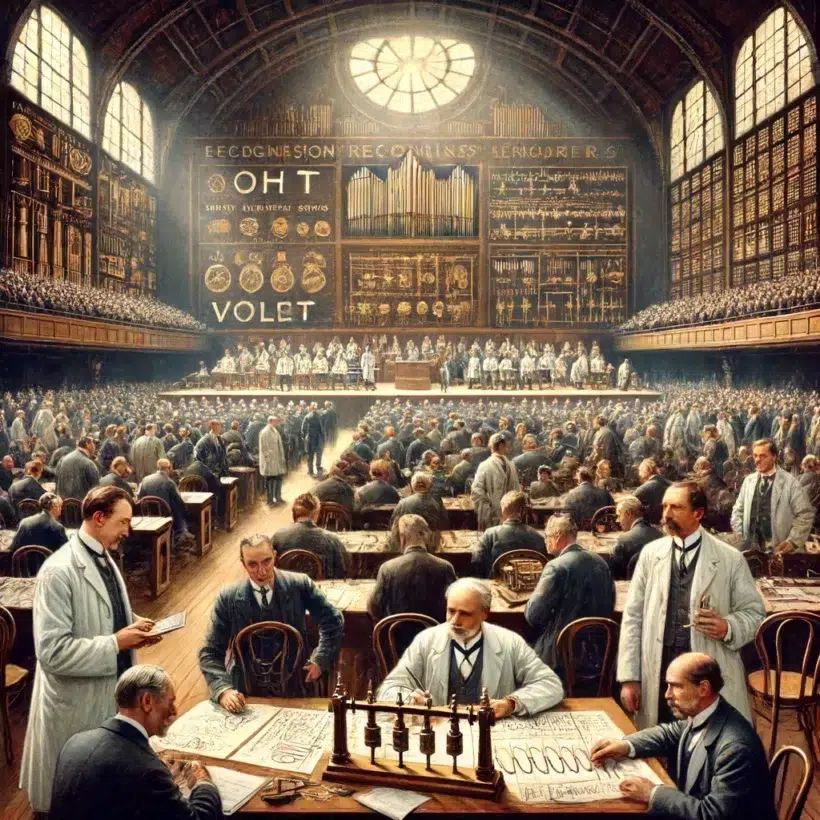
THE FIRST ELECTRIC HOUSEHOLD APPLIANCES
1913
In 1913, the first electric household appliances appeared on the market. Irons, electric kettles, electric ovens, and electric heaters became common items in homes, demonstrating the rapid progress of the home appliance industry.
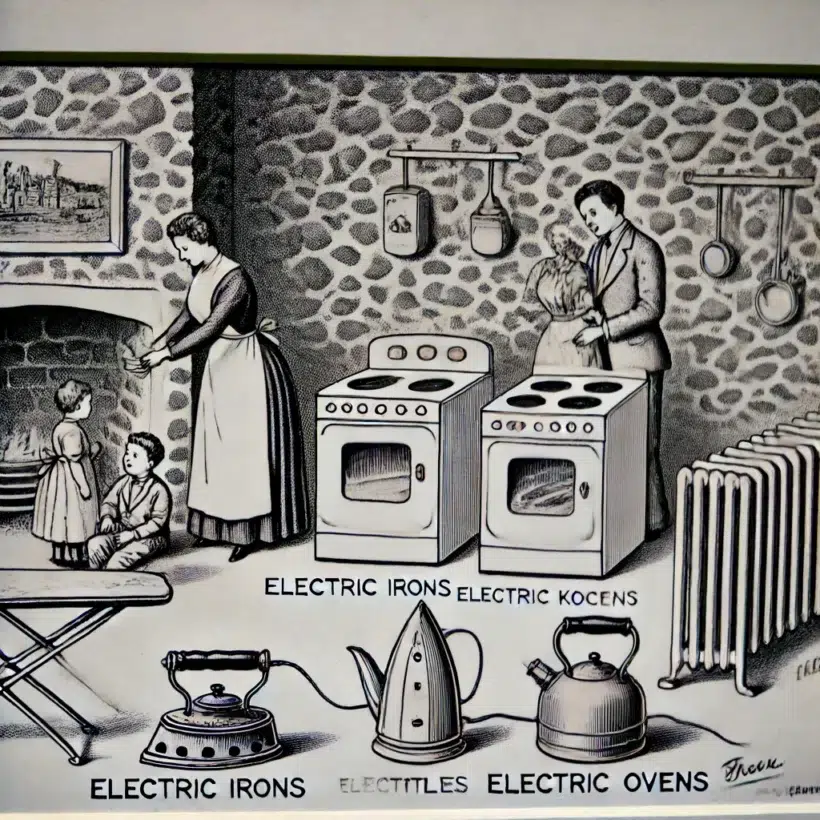
THE CONTRACT BETWEEN PHILIPS AND ELECTRIC
1911
In 1911, a major contract was signed between Philips and Electric (Béringer & De Vos). The firm Béringer & De Vos committed to purchasing 65,000 metallic incandescent lamps from Philips S.A. by the end of 1912. It was also the year of the release of the first 'Electric' catalogs.
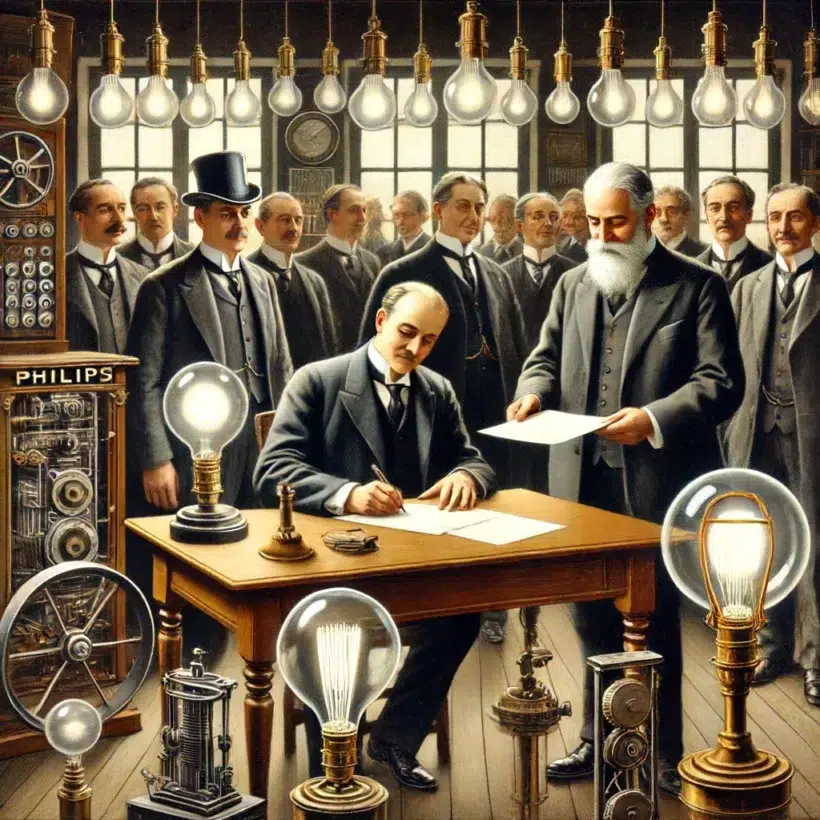
THE BRUSSELS WORLD'S FAIR
1910
In 1910, the Brussels World's Fair was held at Solbosch. This exposition was a significant event for the company.

THE COLLABORATION WITH WESTINGHOUSE ELECTRIC COMPANY
1909
In 1909, the Westinghouse Electric Company authorized Messrs. Béringer & De Vos, their agents in Belgium and Holland, to receive all registered shipments addressed to the Westinghouse Electric Company Limited, 18 Comédiens Street in Brussels. This recognition marked a turning point in the international expansion of the Electric company.

THE HISTORY OF SUPERCONDUCTIVITY
1908
In 1908, Césaire De Vos signed the lease for the store located on Comédiens Street in Brussels. In the same year, Dutch physicist Kamerlingh Onnes discovered the process of helium liquefaction, thus opening the history of superconductivity.
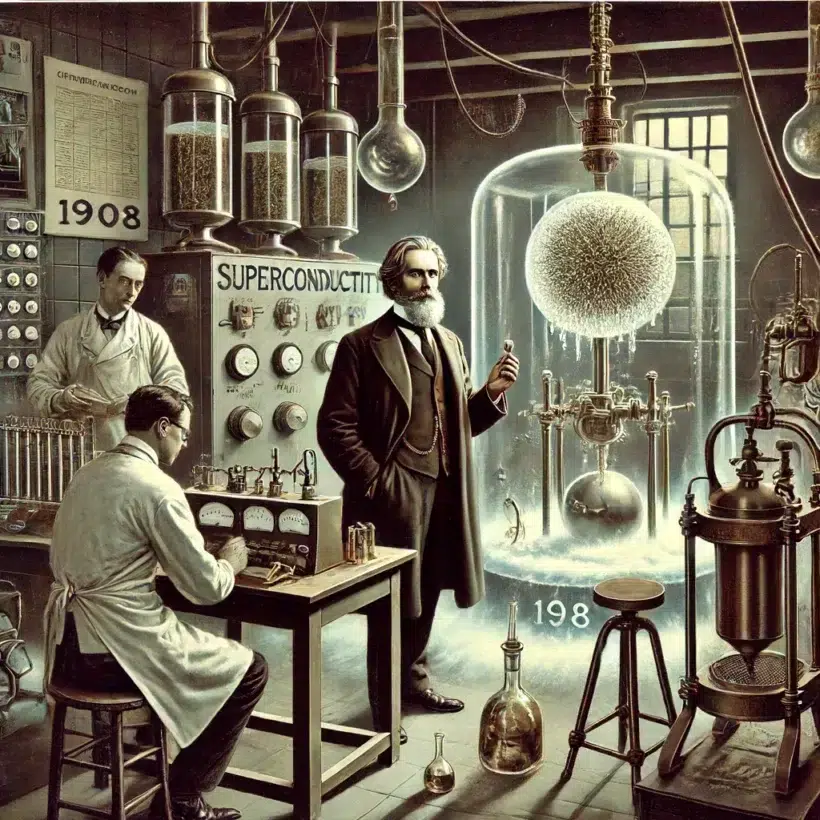
THE PARTNERSHIP 'BÉRINGER AND DE VOS'
1907
In 1907, Electric became a partnership under the name 'Béringer and De Vos'. Césaire De Vos managed the company alone and was responsible for the corporate signature.

THE FIRST TRUE RADIO BROADCAST
1906
In 1906, the first true radio broadcast was aired in the United States. It was also the year the first electric vacuum cleaner was invented.
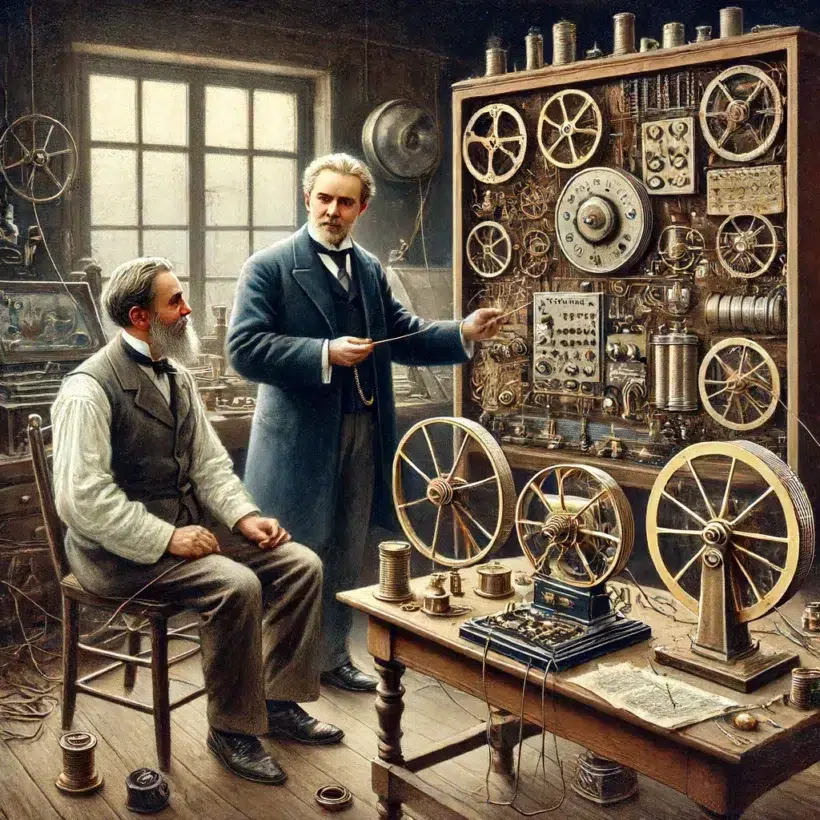
ALBERT EINSTEIN'S THEORY OF RELATIVITY
1882
In 1905, Albert Einstein developed the theory of relativity and established the relationship between mass and energy, formulated by the famous equation E = mc².
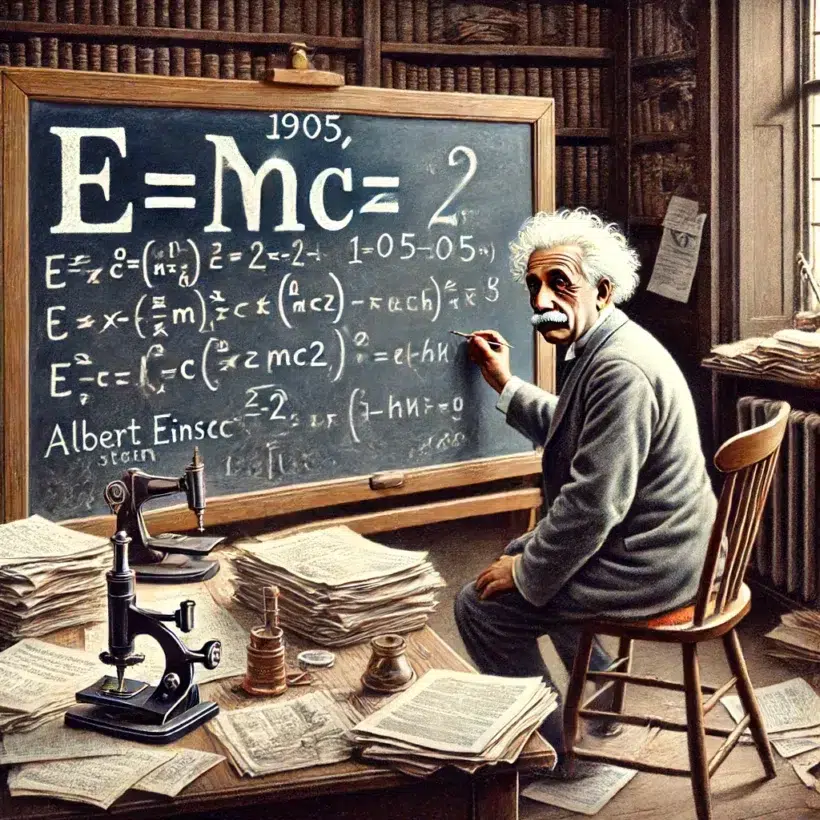
THE ARDENNES CIRCUIT
1904
In 1904, Electric sponsored the Ardennes Circuit, the ancestor of the Belgian Grand Prix. Between 1902 and 1907, the Ardennes Circuit was won three times by Belgians.
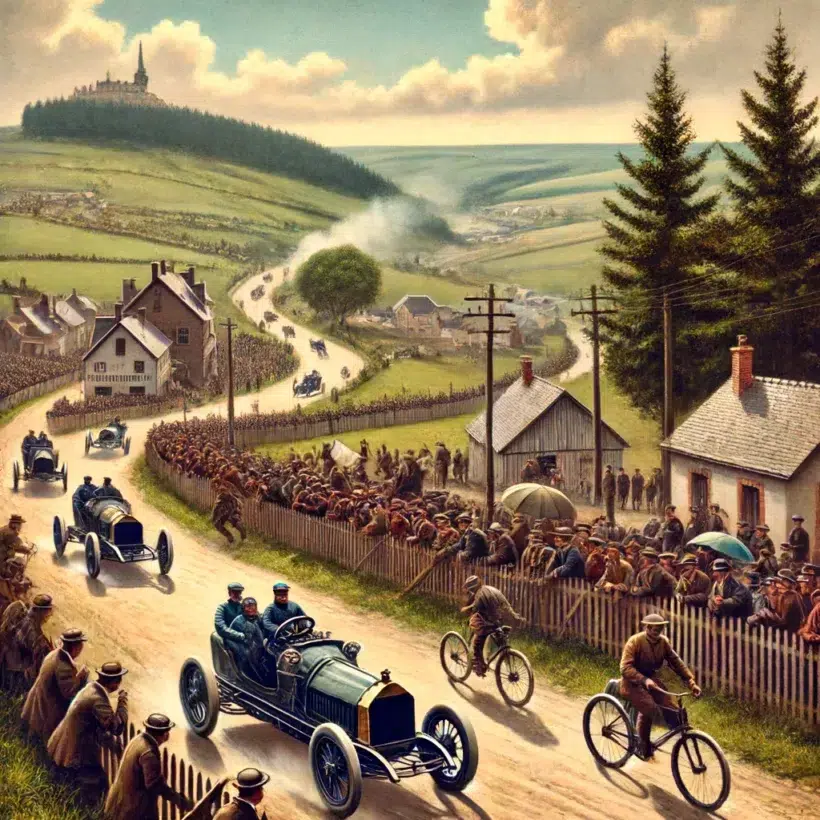
THE FIRST TWO-RATE ELECTRICITY METER
1903
In 1903, the company Landis and Gyr manufactured the first two-rate electricity meter. In the same year, Henry Ford built his first car, although he only started selling them in 1903.
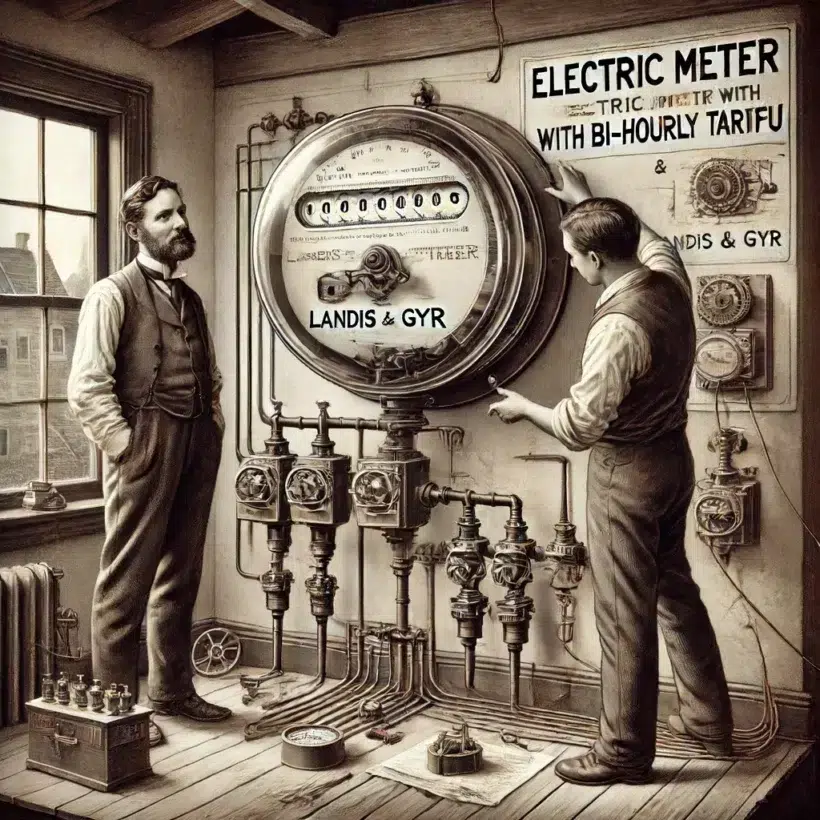
THE INVENTION OF THE TELEGRAPHONE
In 1902, Valdemar Poulsen invented the telegraphone, the ancestor of the tape recorder.
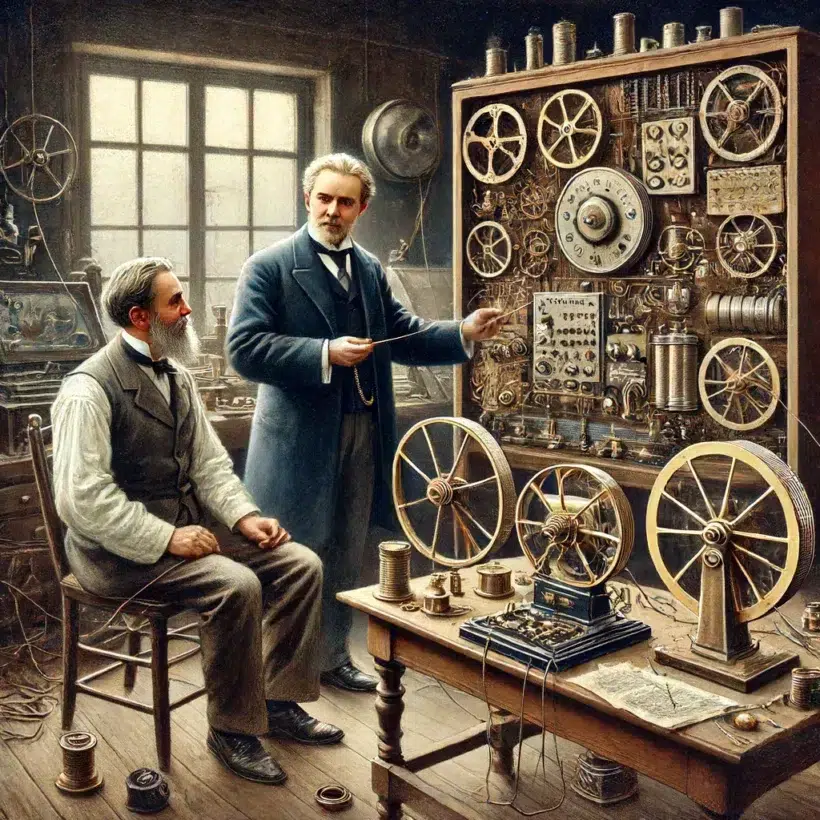
The first transatlantic wireless radio signals
1901
In 1901, Guglielmo Marconi sent the first transatlantic wireless radio signals from Poldhu (Cornwall) to Saint-Thomas (Newfoundland).
The synchronization of the gramophone and the cinema projector
1900
At the turn of the century, Peugeot was already a leading manufacturer. Its catalog included 15 models ranging from 2 to 12 seats, and it advertised in local newspapers. In 1900, Léon Gaumont solved the synchronization problem between the gramophone and the cinema projector, allowing for the emergence of talking movies.
The first cross-Channel radio link
1899
In 1899, the first cross-Channel radio link was established, paving the way for a new era of wireless communication. At the beginning of the 20th century, electric energy had become major. It illuminated parties, exhibitions, and interiors. It was ready to conquer the world. Even though it continued to face formidable competitors, it looked to the future with confidence, as it seemed limitless.
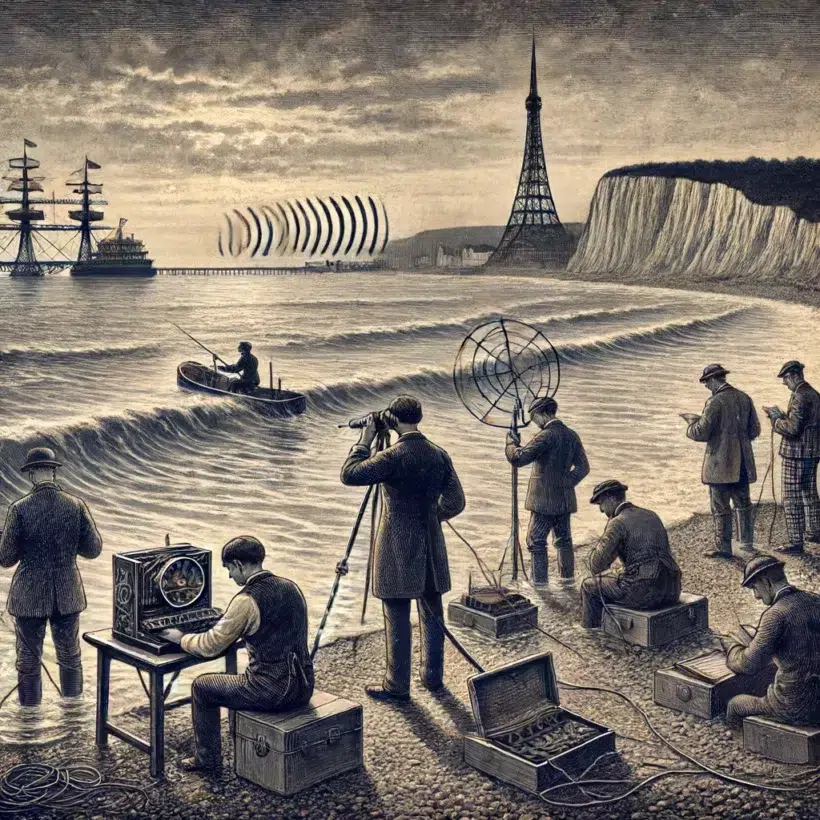
Electric company development
May 14, 1898
His successor, Césaire De Vos, expanded the company. His strategy was simple: visit foreign companies to find products that could be marketed in Belgium. As a Philips importer at the beginning of the 20th century, the company gradually reduced the import of electrical equipment to focus on the distribution of Belgian products that were beginning to emerge, supported by catalogs. In 1898, the first radio factory opened in Chelmsford, England. This marked the beginning of wireless telegraphy, which was extensively illustrated in Electric's catalogs of the time.

The invention of the cathode ray tube
1897
In 1897, Ferdinand Braun invented the cathode ray tube, an essential discovery for the future development of television.

The first modern Olympic Games
1896
In 1896, the first modern Olympic Games brought together 13 countries in Athens. That year, electric companies began installing the first single-rate meters at their customers' premises.
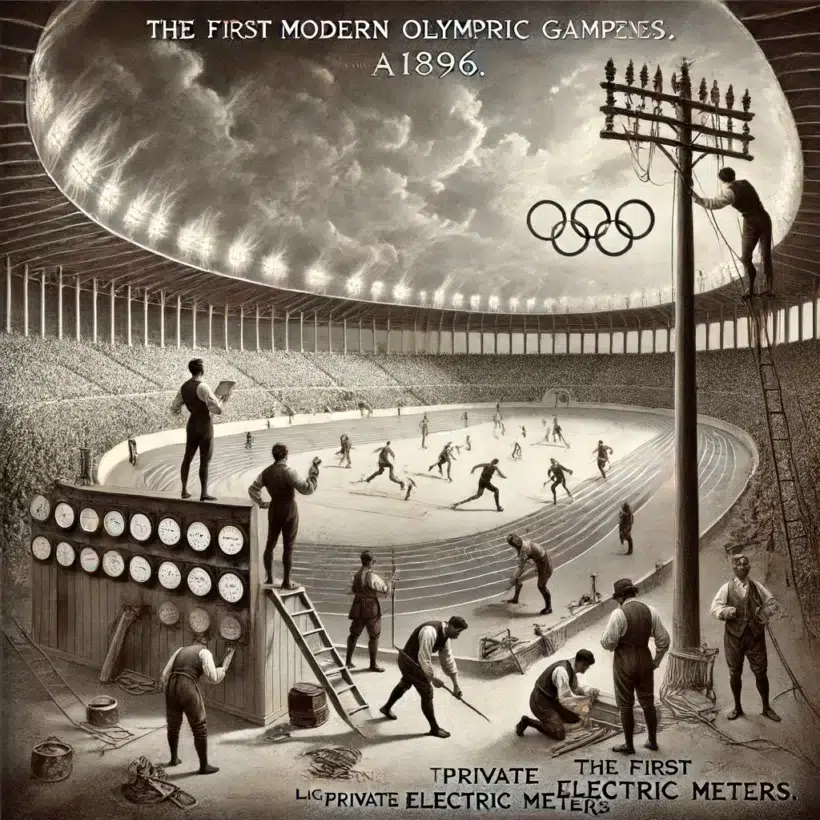
The discovery of X-rays by Wilhelm Röntgen
1895
In 1895, German physicist Wilhelm Röntgen discovered mysterious rays he called X-rays. He produced the first radiograph, generating great interest among physicians. Electric then began marketing X-ray tubes. It was also this year that Thomas Edison created the first fluorescent lamp from an X-ray tube.

Art Nouveau conquers Europe
1894
In 1894, the Art Nouveau style began to conquer European cities. This artistic movement would later influence the cover pages of Electric's catalogs. Césaire De Vos, at the age of 14, started selling lampshades for electric lighting.
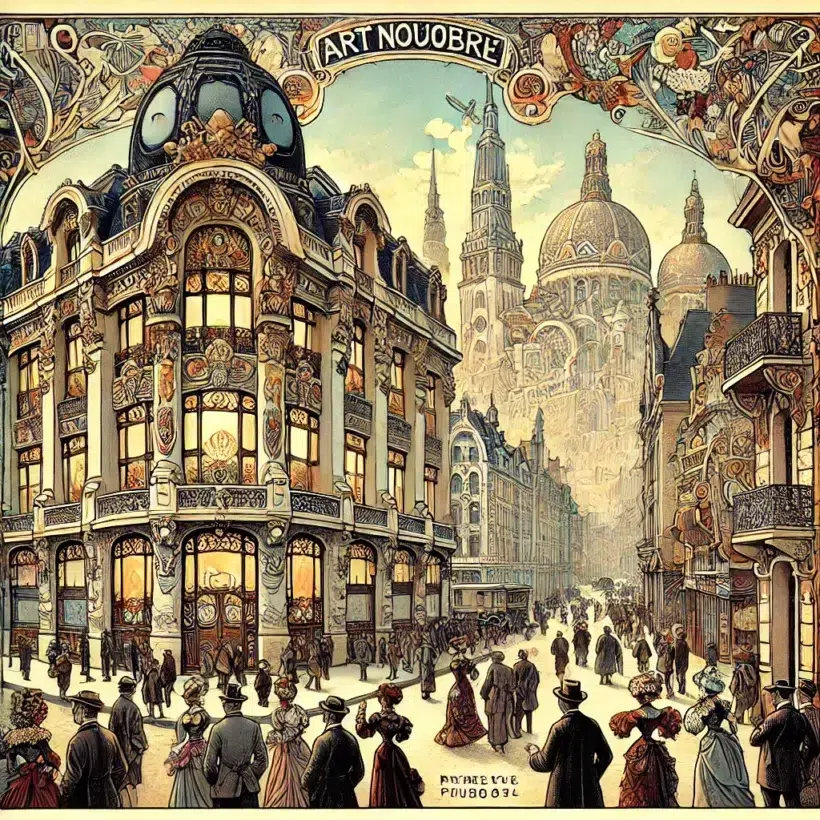
The congress of electricians in Chicago
1893
In 1893, during the congress of electricians in Chicago, the measurement units approved at the congresses of 1881 and 1889 were confirmed and clarified. It is also the year of the emergence of the first household appliances such as the iron, the electric kettle, the electric oven, and the electric heater, demonstrating the progress of the industry.
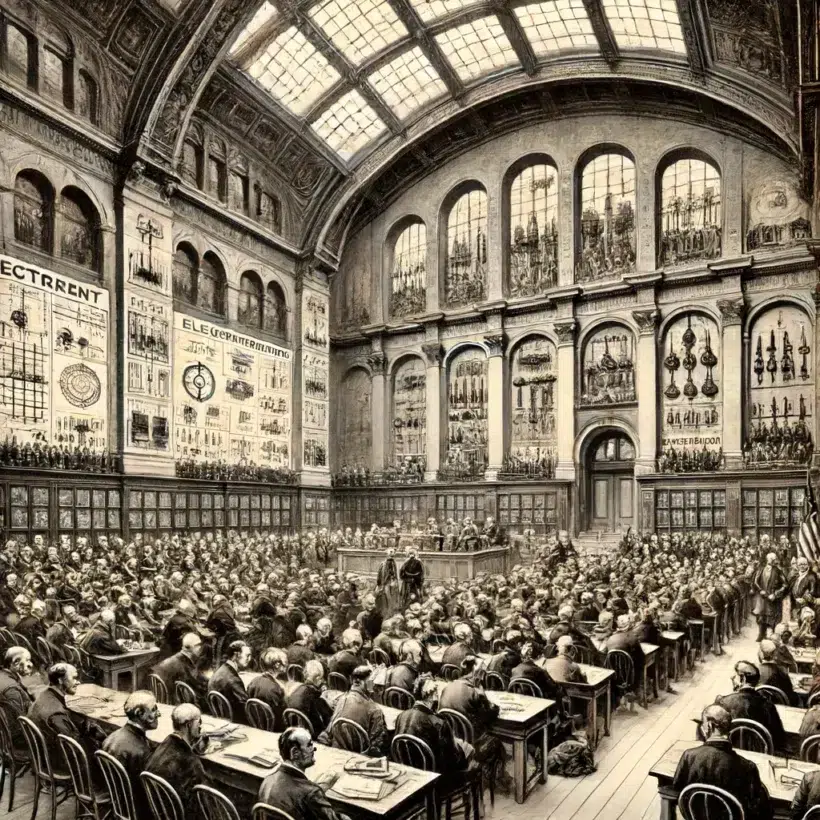
The transformation of the Edison General Electric Company
1892
In 1892, the Edison General Electric became simply General Electric, a company that would play a crucial role in the history of electricity.
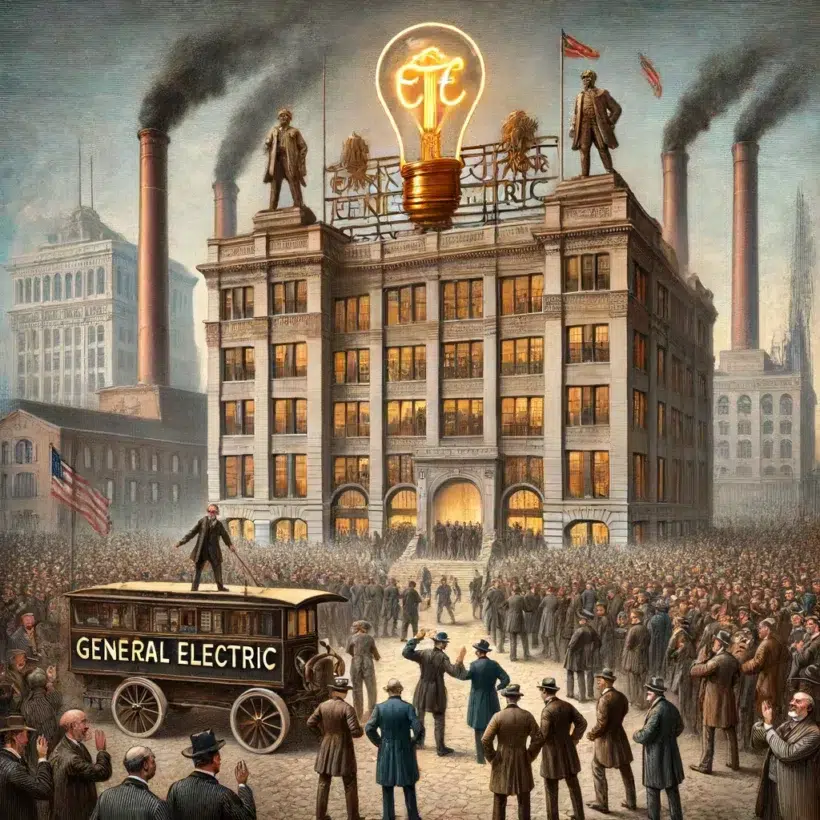
The creation of the Philips company
1891
In 1891, brothers Gérard and Anton Philips founded the Philips company in Eindhoven, the Netherlands, to manufacture electric lamps. The beginnings were difficult, but in April 1892, they received their first order from a cheese factory in Gouda. In their second year, Philips produced 11,000 lamps, and Electric became the official importer of Philips lamps in Belgium.
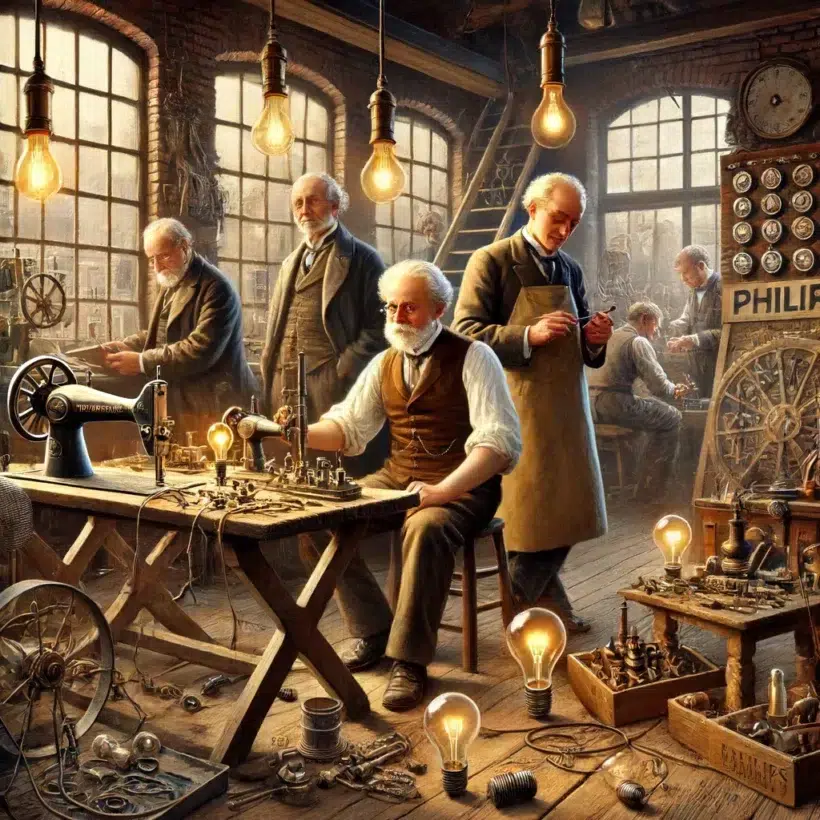
The electric metro locomotive
1890
In 1890, the first electric metro locomotive entered service in London, ushering in a new era for public transportation in major cities.
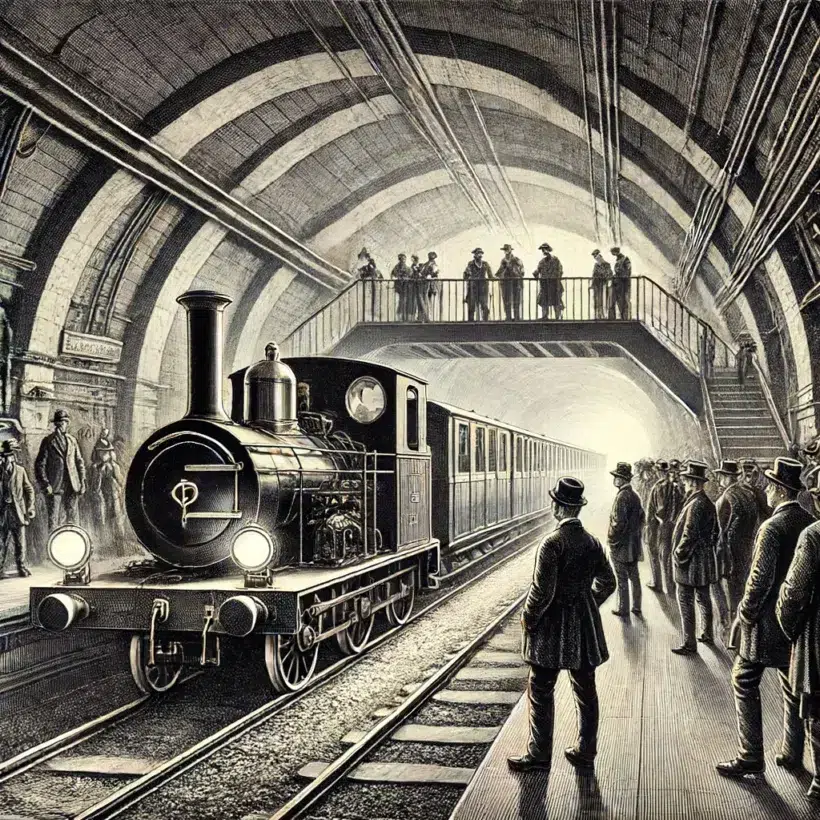
The Eiffel Tower and the Edison General Electric Company
1889
In 1889, the construction of the tower designed by Gustave Eiffel for the Universal Exhibition was completed, making it the tallest structure in the world at 324 meters. The Edison Electric Light Company became the Edison General Electric Company. At the International Congress of Electricians in Paris, the joule and watt were confirmed as units of energy and power, and the kilowatt was chosen as the unit for measuring the power of electric motors.

The collaboration with Nikola Tesla
1888
In 1888, Nikola Tesla, employed by Thomas Edison, designed the first operational system for the generation and transmission of alternating current for electricity networks. However, Edison was a staunch advocate of direct current. Therefore, Tesla resigned and sold the rights to his inventions to Georges Westinghouse, with whom Electric would later collaborate.
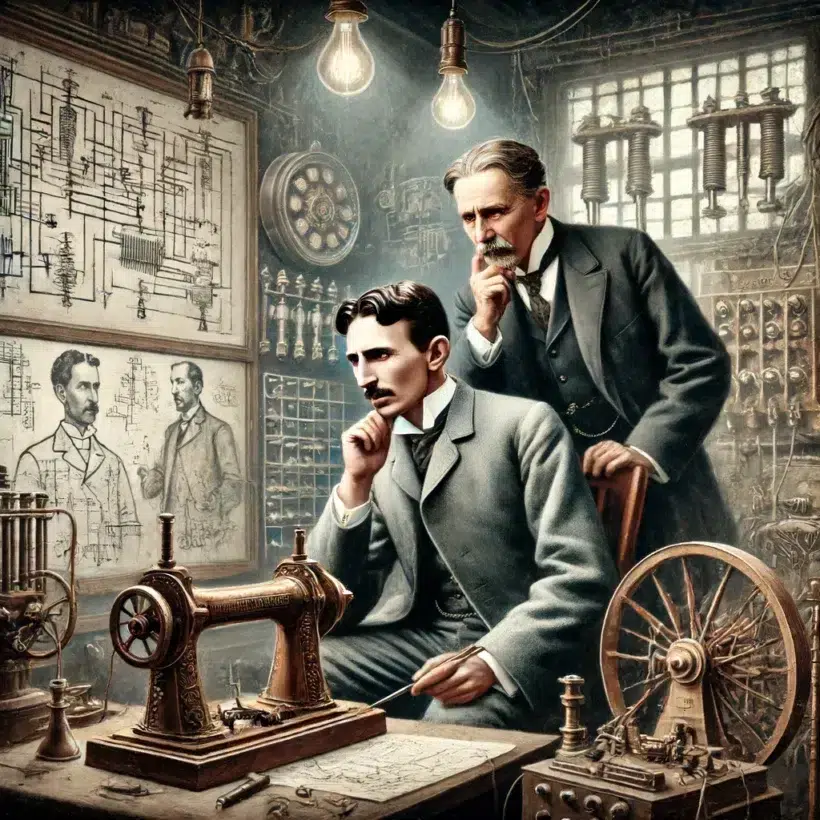
The invention of the dry cell by W. Hellesen
1887
In 1887, W. Hellesen succeeded in constructing the world's first effective dry cell, a new energy source that immediately gained success. Electric quickly manufactured its own version of the dry cell.
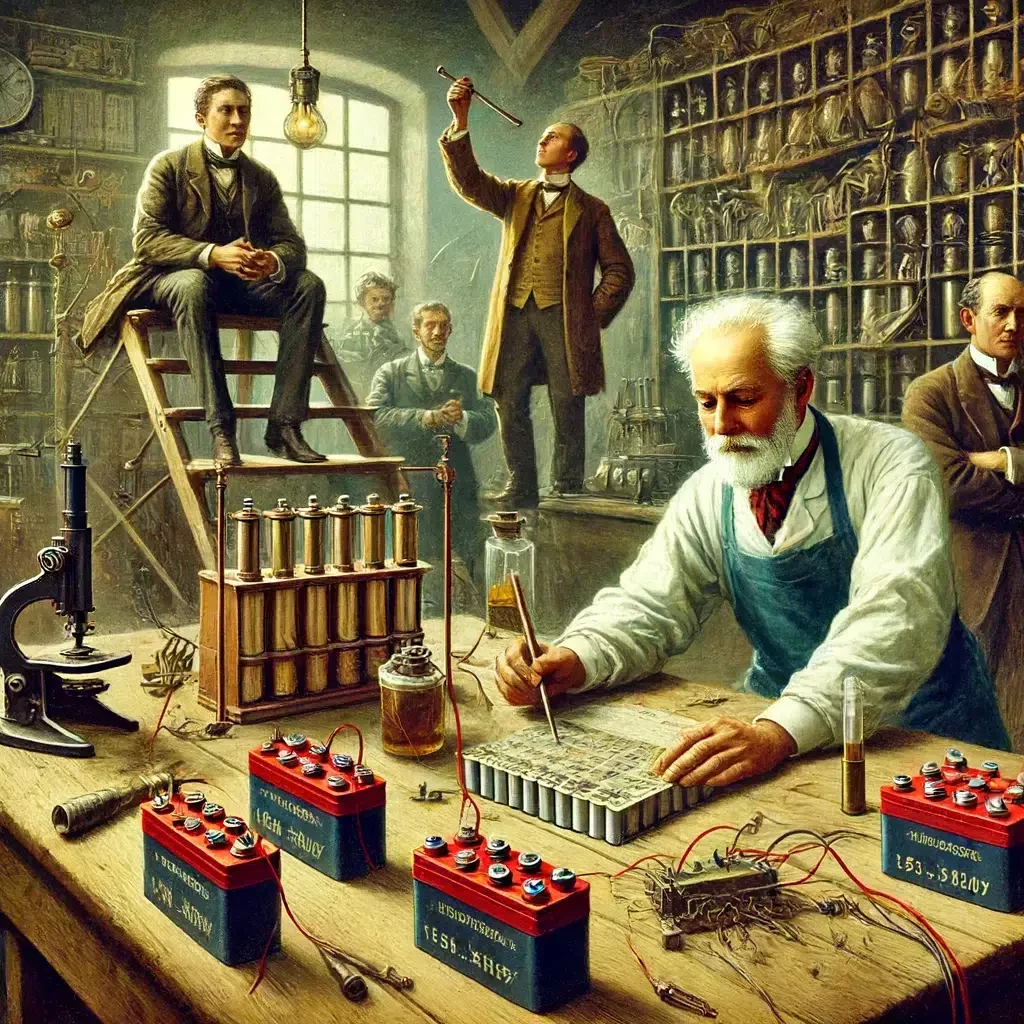
The foundation of Westinghouse Electric Corporation
1886
Georges Westinghouse, an American inventor and industrialist, founded the Westinghouse Electric Corporation in 1886. The following year, he established the first alternating current network for lighting in Buffalo.
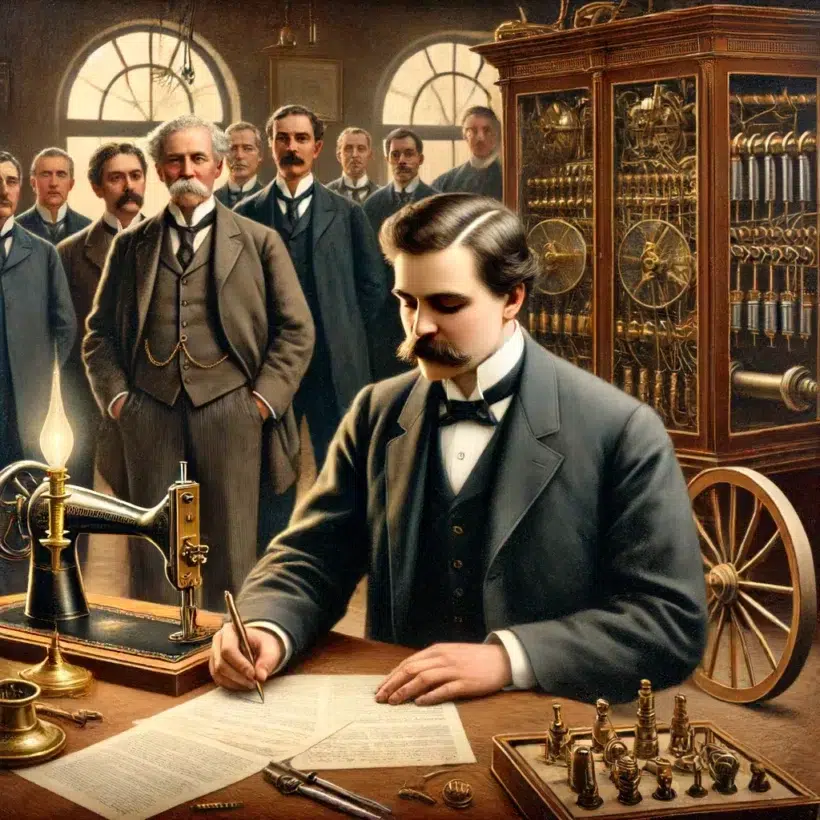
The first electric tram
1885
In 1885, the first electric tram was put into service in Sarajevo, Bosnia-Herzegovina. This technological advancement marked an important milestone in the evolution of urban transport.
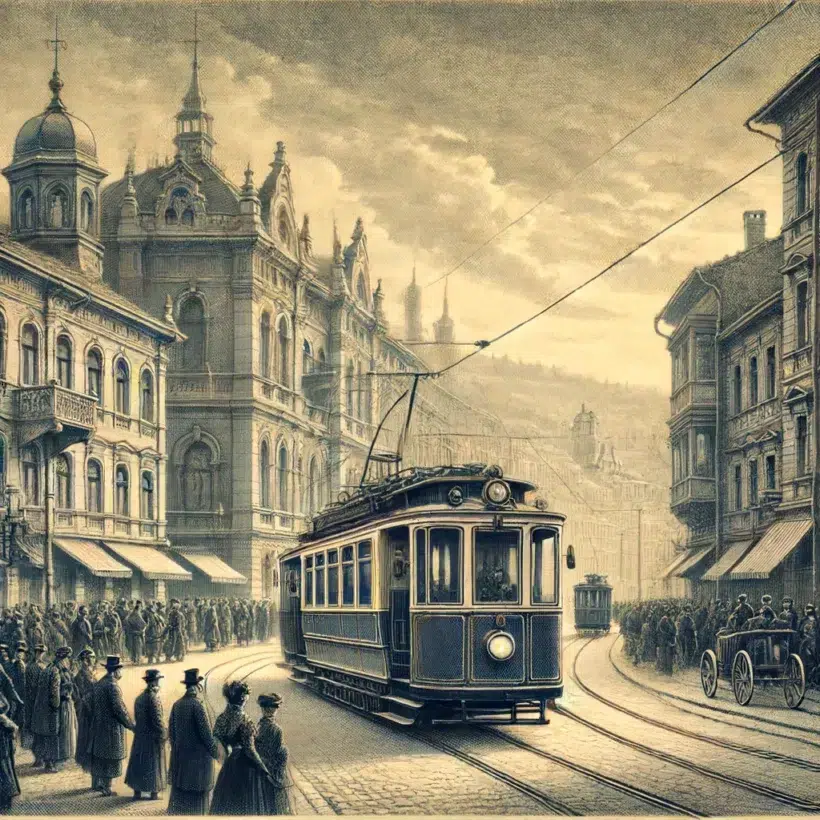
Lucien Gaulard's first transformer
1884
In 1884, Lucien Gaulard presented the first transformer that allowed the voltage delivered by an alternator to be increased, facilitating the transport of electrical energy via high-voltage lines. In the same year, Nikola Tesla developed the first induction motor using alternating current.
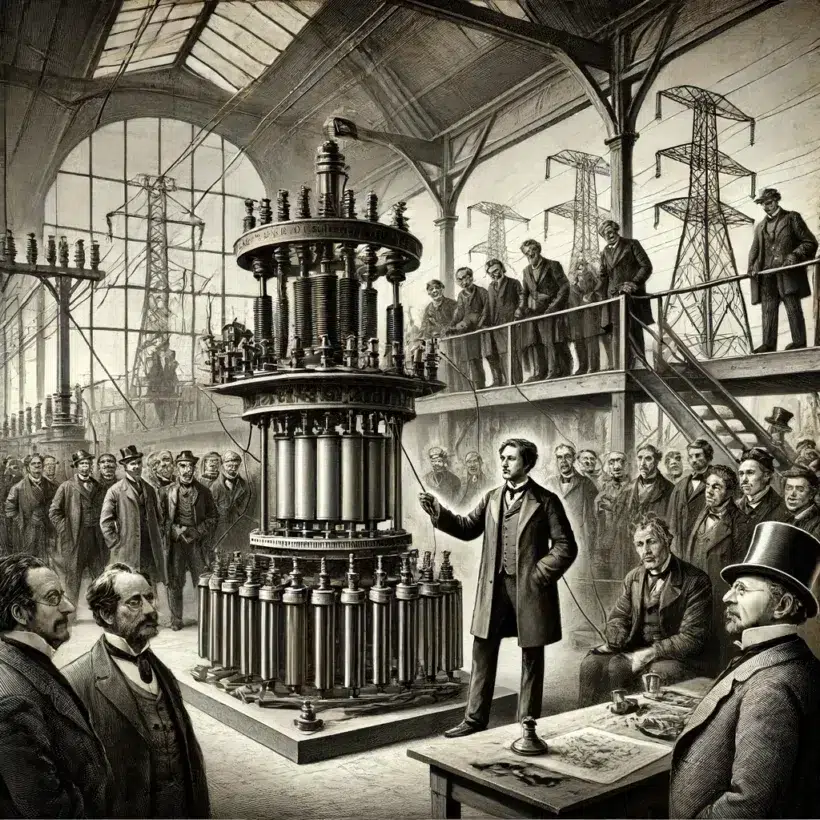
Foundation of Electric
1883
The origins of ELECTRIC date back to 1883. It was during this time that Mr. Béringer organized the distribution of devices for converting gas lighting installations into electrical installations.
The first electric factories
1882
In 1882, Lewis Howard Latimer obtained a patent for his process of manufacturing carbon filaments. In the same year, the Edison Electric Light Company inaugurated the first electric factories producing direct current in London and New York, marking the beginning of large-scale electricity distribution.
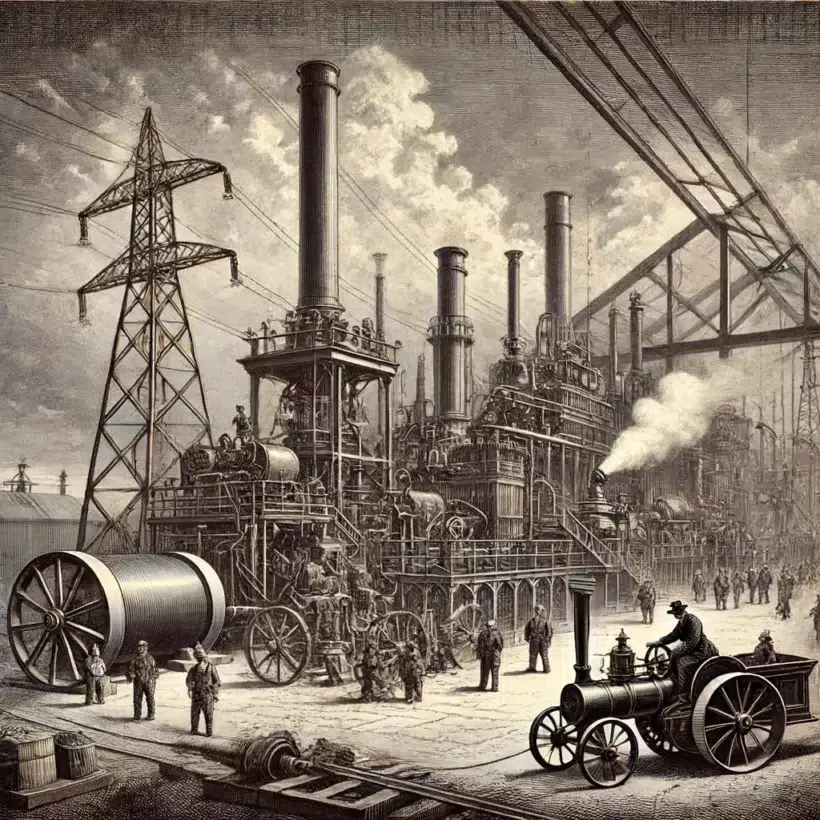
The first International Electricity Exhibition
1881
In 1881, Paris hosted the first International Electricity Exhibition. Visitors discovered revolutionary innovations such as Zénobe Gramme's dynamo, Thomas Edison's light bulbs, Werner von Siemens' electric tram, and Alexander Graham Bell's telephone. It was also during this exhibition that the units of electrical measurement, such as the ohm, volt, ampere, coulomb, and farad, were established by the International Congress of Electricians.
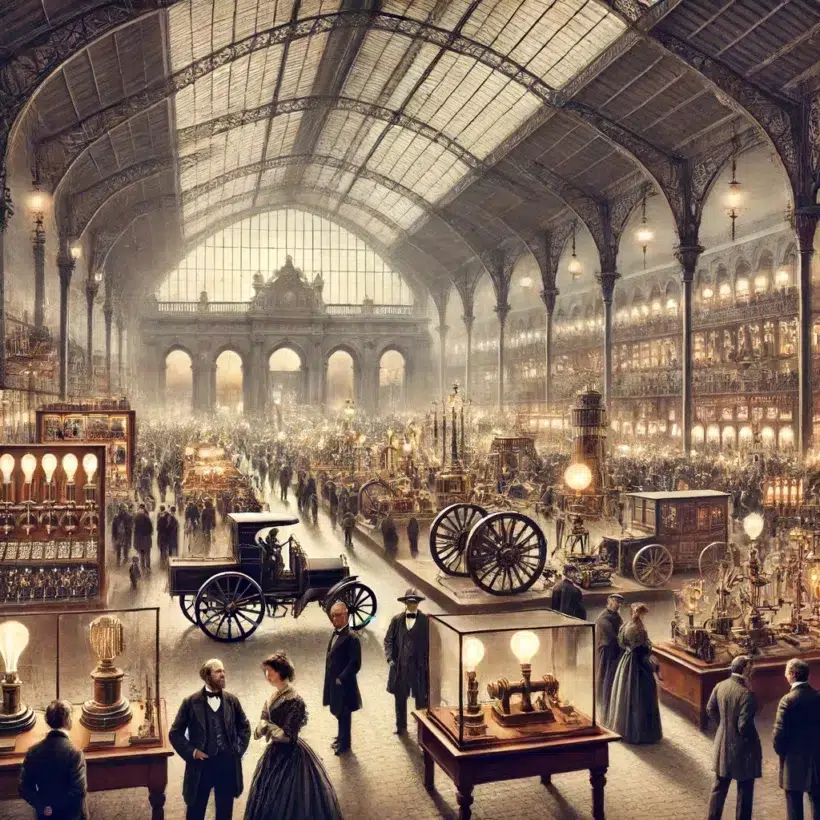
The invention of the incandescent lamp by Thomas Edison
1879
In 1879, Thomas Edison created the first incandescent lamp with a bamboo filament in a vacuum, capable of operating for about thirty hours. Edison didn't stop there and founded several industrial companies specializing in the manufacture of lamps, electric motors, and urban networks. Throughout his career, he filed more than a thousand patents.
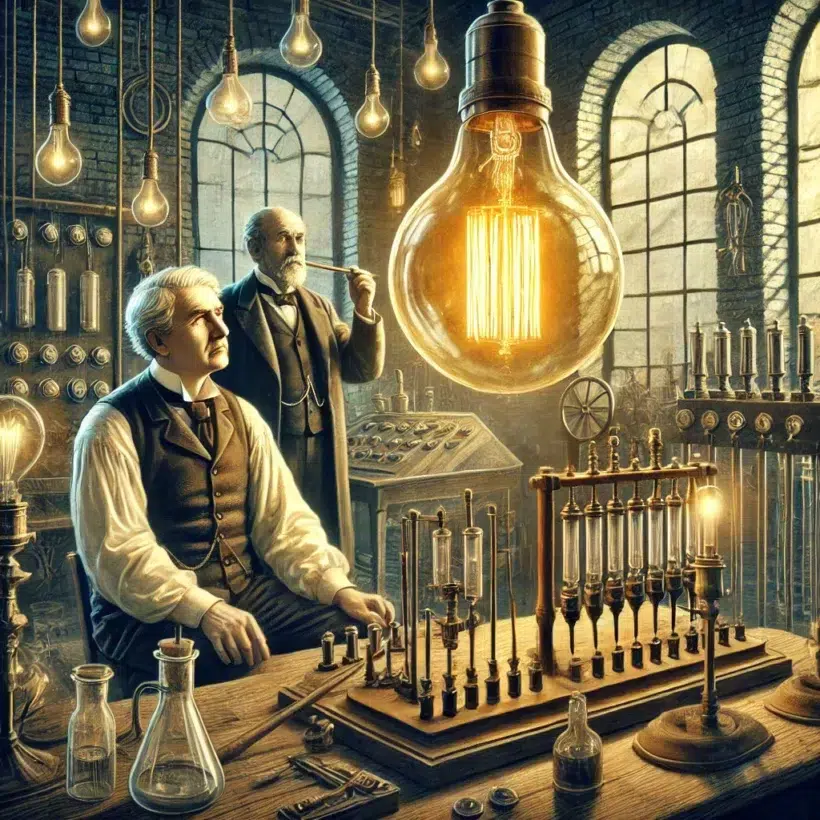
The awakening of electricity
In the second half of the 19th century, electricity sparked many hopes, illusions, and fears. Among the most iconic inventions of that time, the electric lamp met the desire for easily accessible, simple to use, and safe lighting.